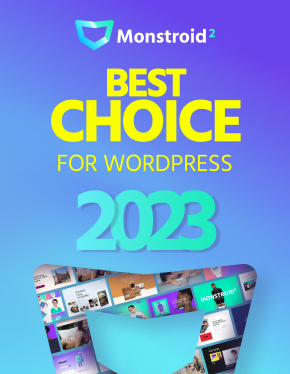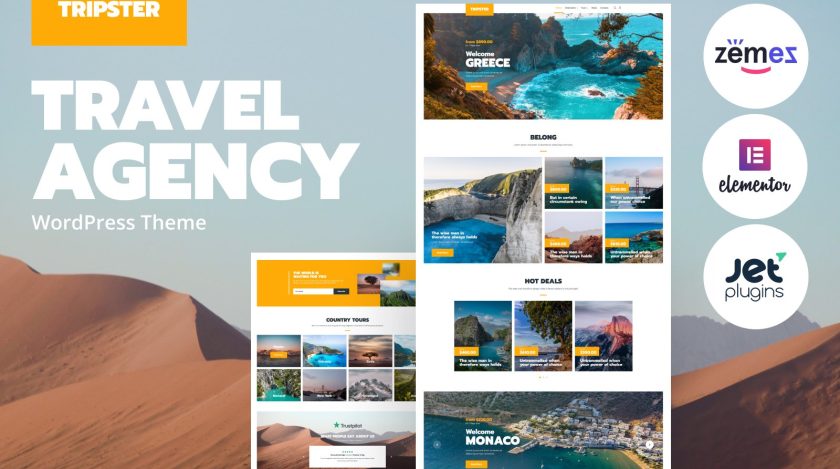Creating a travel website today is not only about showcasing destinations. In 2025, competition in the digital travel space is intense, and travelers expect real value — tools, advice, and reliability. Even a beautiful site can fail if it’s slow, hard to navigate, or lacks purpose.
Today, in 2025, the travel market is fierce. Travel websites are no longer just places to show real photos of destinations. If your site can’t help with useful advice, its visitors will leave and find one that can.
But it’s not all that bad. It doesn’t take a coding genius to create a website that converts in 2025. You just need a practical, step-by-step plan. Which we’ll share with you now.
1. Focus on User-First Design
The first thing a visitor sees is your design. It must be fresh and welcoming. Responsiveness, navigation, and interactive elements play a role here.
Go Mobile-First
More than half of all web traffic is now on phones. A website must look and work perfectly on a small screen. For example, if it’s impossible to read something on a phone without zooming in, then the design is broken.
Start with a responsive template. It is already mobile-friendly and easy for non-techies to use. Zemez templates like Tripster are designed this way from the start, offering smooth scrolling, easy menus, and clear content hierarchy.
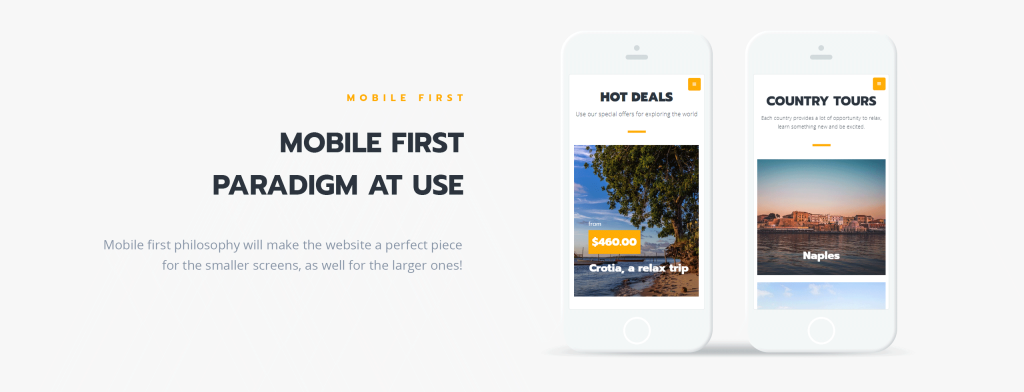
Keep Navigation Clean
Sites about tourism, especially travel blogs, often have too much information. It is therefore important not to make people dig for what they’re looking for.
Use an intuitive UI (User Interface) – create clear labels and simple menus. We know that good navigation is a clean, open road, while bad navigation is a traffic jam. The same principle applies when creating websites that convert visitors into customers.
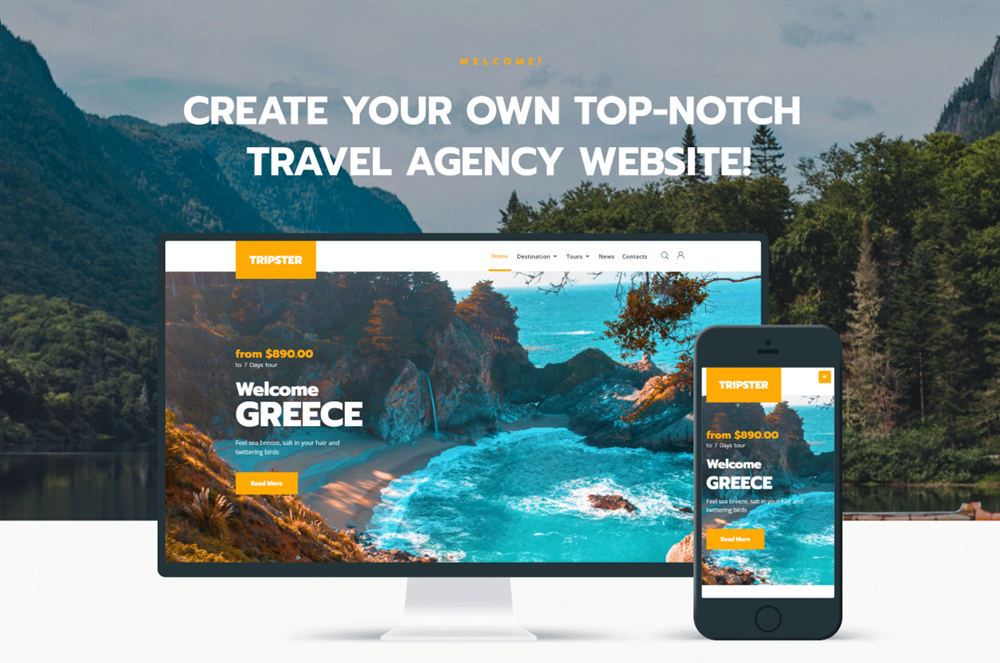
Clear Calls-to-Action (CTAs)
You may want your visitor to do various things (e.g., buy a tour, read an article, sign up for a newsletter, book a demo). The goal is to increase the chances of clicks.
Create a bright and easy-to-find CTA button. When I cleaned up the main navigation on one of my blogs, the time people spent looking around – their dwell time – skyrocketed, and conversions went up.
2. Make Performance Your Top Priority
Speed is a foundation for trust and sales. When standing in line for coffee, and the line doesn’t move, you leave, right? The internet is the same. People are impatient. If a page takes too long to load, they are gone before seeing your beautiful content.
Google and SOASTA data show this clearly: even a one-second delay in page loading can cut your conversions (sales, sign-ups) by 7%. That’s seven out of every hundred potential customers walking away because a webpage is slow. Speed, in other words, directly affects your money.
Use lightweight code and optimized images. Always start with a clean foundation. Many modern, ready-made templates are already built with lightweight, clean HTML. And for images, it’s best to use tools to compress them before uploading them.
3. Add Trust-Building Elements
If you want people to give you their money and personal information, you must earn their trust first. How to do this:
- show proof from real people;
- be clear about policies (nothing kills a sale faster than unclear rules);
- offer secure payment choices.
Let’s address each point in turn.
Let others say you’re great. Display reviews and testimonials from happy customers clearly. If you work with big, well-known companies, put their partner logos on your travel website. These badges show you are a serious business.
Next, the availability of privacy policy and terms of service (as well as the refund policy and booking conditions in the case of commercial sites) demonstrates transparency and shows that you have nothing to hide. They must be easy to understand and easy to find (e.g., in the footer).
How to Create a Privacy Policy and Terms of Service for Your Website
Finally, offer a payment method that people already trust. Include multiple ways to pay (credit card, PayPal, Apple Pay, or others) and show trust badges (SSL security). The aim is to make the customer feel safe enough to complete the purchase.
| Trust-Building Element / Purpose (The Why) | Implementation (The How) |
| Social proof – Shows new visitors that others trust you. | Clearly display reviews, testimonials, and partner logos. |
| Transparency – Eliminates customer doubts and confusion. | Ensure Privacy Policy, Terms of Service, and Refund Policy are clear and easy to find. |
| Payment security – Makes the customer feel safe completing the transaction. | Offer credit card, PayPal, Apple Pay/Google Pay methods and display trust badges. |
4. Integrate Practical Travel Solutions
The winning travel websites that convert in 2025 are those that help people on their trip. Move past just listing ‘Top 10 Beaches…’ articles. The future of conversion is in utility: integrating the essential tools a traveler uses every day. For instance, such solutions could be real-time flight/hotel booking engines, itinerary planners, or interactive maps that show points of interest.
One of the most powerful utilities you can offer today is seamless mobile connectivity. Reliable internet access has become as essential as accommodation. Stats confirm this: the majority (55.4% of respondents in a DataReportal study) use the internet primarily to stay connected during their trips.
This is where global eSIM integration can play a major role. By embedding services such as global eSIM solutions by Ohayu into your travel platform, you let users purchase instant data plans as they plan or book their trips — eliminating roaming costs and improving user satisfaction.
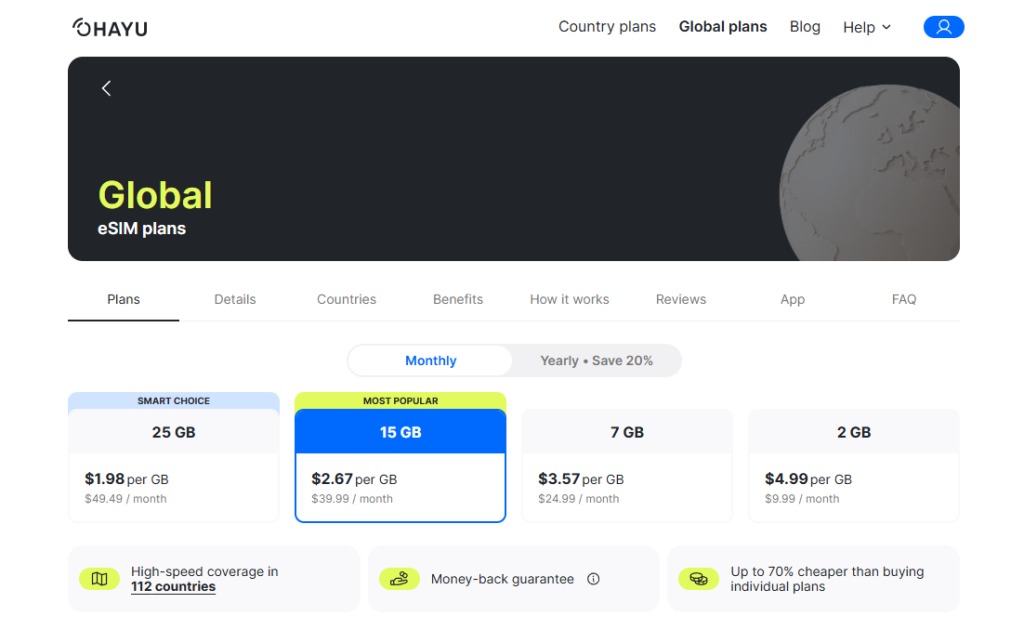
5. Optimize for SEO and Content Discovery
The website is useless if no one can find it. To avoid being ‘the useless’ one, you need to speak Google’s language:
- structure your data;
- focus on local searches;
- create content hubs.
Use structured data for things like flights, hotels, and reviews. This helps Google understand what your page is about, and as a result, your details can show up right away in SERPs.
Note that people search for “travel near me” now more than ever. Long-tail queries (longer, more specific search phrases) have less competition and can bring you visitors who know exactly what they want.
And forget about random posts – better to create a series of deep, helpful articles about one place. For example, a complete travel guide, with posts on food, transport, history, and attractions, is likely to become a content hub that Google loves.
| Goal | Strategy | Example of a Travel Site that Converts |
| Speak Google’s language | Use structured data | Mark up flights, hotels, and reviews so Google can create rich snippets. |
| Win local traffic | Focus on long-tail queries | Target “budget hotels near Louver museum” instead of just “Paris hotels.” |
| Become an authority | Create content hubs | Build a “Guide to Vilnius” that links out to detailed articles on food, transport, and history. |
6. Future-Proof Your Site with AI and Personalization
We are creating sites for 2025, so we must think about the future.
Start with the implementation of personalized recommendations. When a visitor browses ski trips, show them other ski-related items the next time they visit. Personalization engines remember what a user looked at and suggest trips based on their browsing history. Be that smart waiter who knows in advance the favorite meal before ordering.
Then consider AI chatbots. They won’t replace a human agent, but they can quickly answer common questions about weather, basic trip planning, etc. That way, customer support will be instant and available 24/7.
If you want a global audience, your content must be in their language. Tools that support machine translation (MT) can now handle automated content translation to help you reach travelers all over the world without human involvement.
The True Destination of Your Travel Website
The ‘ultimate travel website’ in 2025 is about moving beyond aesthetics to be genuinely useful, lightning-fast, and trustworthy.
You don’t need a huge budget or a team of developers. It is enough to start with a solid, modern template foundation. Then, layer in practical integrations. After that, focus on user needs – speed, clear information, and tools like a global connectivity solution (like Ohayu for eSIMs) – and your site will be a powerful digital assistant that makes conversions happen.
Now, what is the first tool or feature you plan to add to your newly created site?









